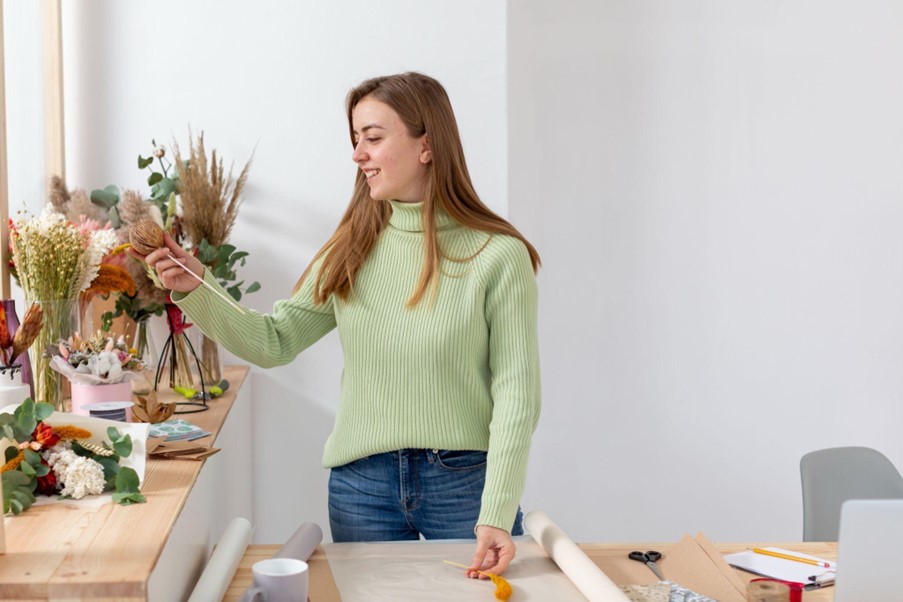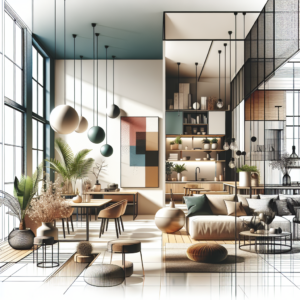The world of interior design is constantly evolving, and next year promises to bring innovations that will transform the way we conceive our spaces. From the selection of sustainable materials to the incorporation of technology in furniture, the trends that will shape 2025 seek a perfect balance between aesthetics, functionality, and environmental commitment. As ecological awareness and the need for more versatile spaces continue to grow, interior design is adapting to these new demands by offering innovative solutions. In this article, we delve deep into the keys that will define the furniture of the future.
1. Natural and sustainable materials
Sustainability has become a fundamental pillar in interior decoration. The use of ecological and renewable materials is gaining unprecedented importance, with options such as certified wood, bamboo, cork, and natural fibers emerging as favorites in furniture manufacturing. In addition, the reutilization of materials, such as recycled plastics and reclaimed metals, allows for reducing environmental impact without compromising the quality or durability of the furniture. This trend not only responds to a global need for environmental care but also adds a distinctive aesthetic value to spaces, combining the rustic with the modern for a balanced and harmonious result.
2. Earthy colors and relaxing tones
In 2025, the colors dominating interior design will be inspired by nature, promoting a sense of calm and well-being. Warm and earthy tones like beige, terracotta, olive green, and deep blue are trending, as they evoke tranquility and sophistication in spaces. These colors easily integrate into different decorative styles and allow for creating cozy and timeless environments. Combining these tones with natural textures, such as untreated wood or linen fabrics, reinforces the feeling of warmth and comfort within the home, turning it into a personal sanctuary to relax and unwind from daily stress.
3. Multifunctional furniture to optimize spaces
The growing need to optimize spaces has driven the popularity of multifunctional furniture. In cities where square meters are limited, having versatile furniture has become essential. Sofas that transform into beds, foldable desks, and tables with hidden storage compartments are just some of the options designed to maximize space utilization without compromising aesthetics. This trend is not only practical for small homes but also suits offices and home workspaces, offering smart solutions for those seeking efficiency and organization in their daily environment.
4. Technology integrated into design
The furniture of the future must not only be visually appealing but also functional and technologically advanced. The integration of smart devices into furniture is revolutionizing how we interact with our surroundings. In 2025, we will see an increase in furniture with wireless chargers, customizable LED lighting systems, and surfaces with solar panels. Additionally, ergonomic armchairs with automated adjustments and smart mirrors with WiFi connectivity are becoming essential elements to enhance comfort and efficiency at home.
5. Return to artisanal and retro style
While technology is advancing rapidly, there is also a strong trend towards a return to craftsmanship and vintage. Handmade finishes, natural textures, and unique pieces with history are taking center stage in interior design. This style aims to merge modern elements with classic details, creating spaces full of personality and warmth. For example, combining solid wood dining tables with contemporary chairs can strike a perfect balance between nostalgia and innovation, resulting in an elegant and timeless design.
6. Flexible and modular spaces
Interior design is adapting to new ways of life, where versatility is key. Modular furniture allows for configuring spaces according to the changing needs of daily life. From adjustable bookshelves to modular sofas that transform into different configurations, this trend is designed to offer practical solutions without compromising on design.
7. The importance of comfort and ergonomics
Well-being at home is a priority, and ergonomic furniture has become exceptionally relevant. Interior design seeks to create spaces that promote comfort and postural health. In this context, armchairs with lumbar support, adjustable desks, and chairs with anatomical design have become indispensable allies to improve quality of life at home.
The furniture trends for 2025 reflect a combination of innovation, sustainability, and well-being. The designs aim to optimize spaces, offer functionality, and bring warmth to homes, without losing sight of the importance of ergonomics and technology. If you are looking to renovate your home with furniture that follows these trends, explore the available options and give your space a modern and comfortable touch.
Referrer: Opendeco, decoration news in Spanish











